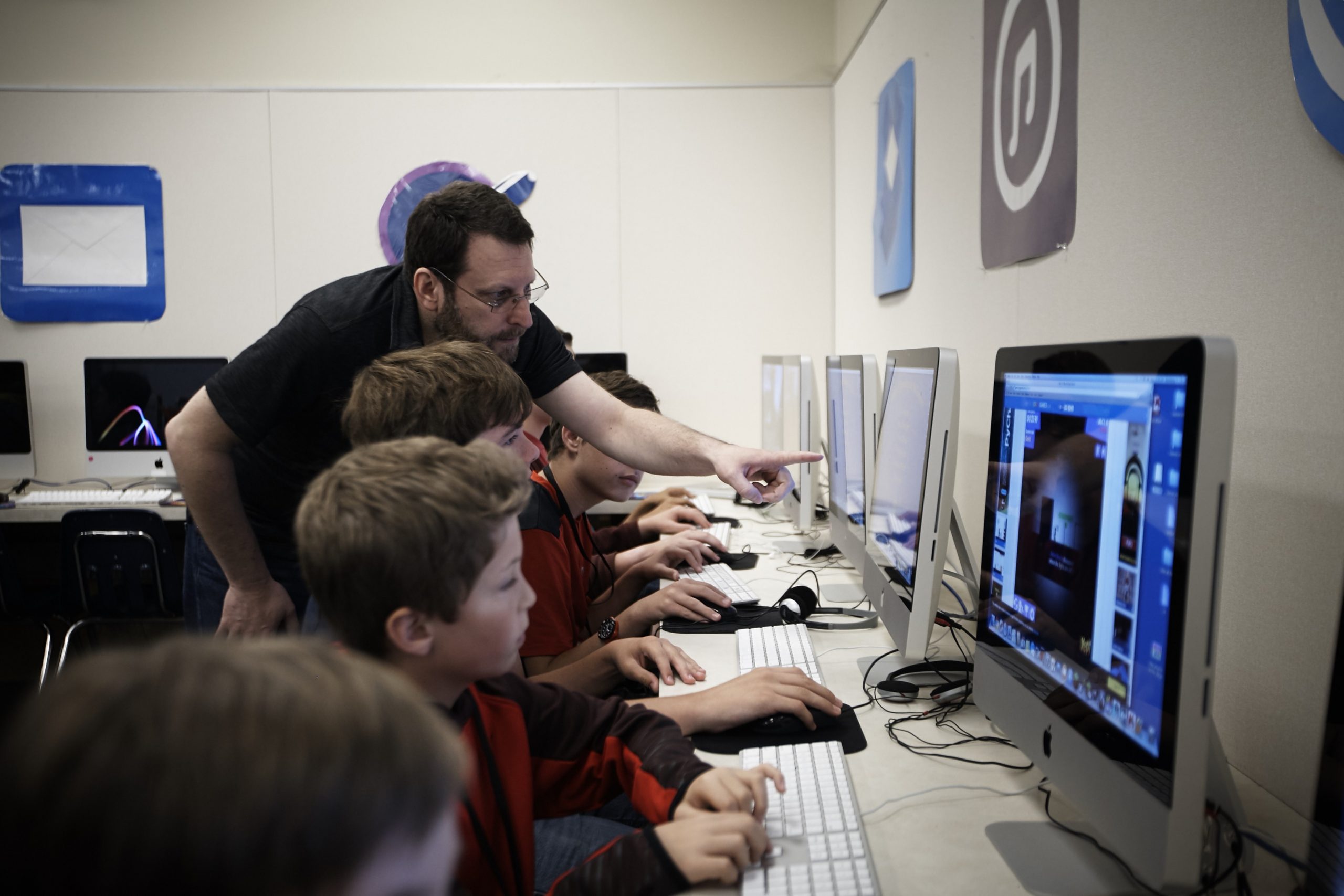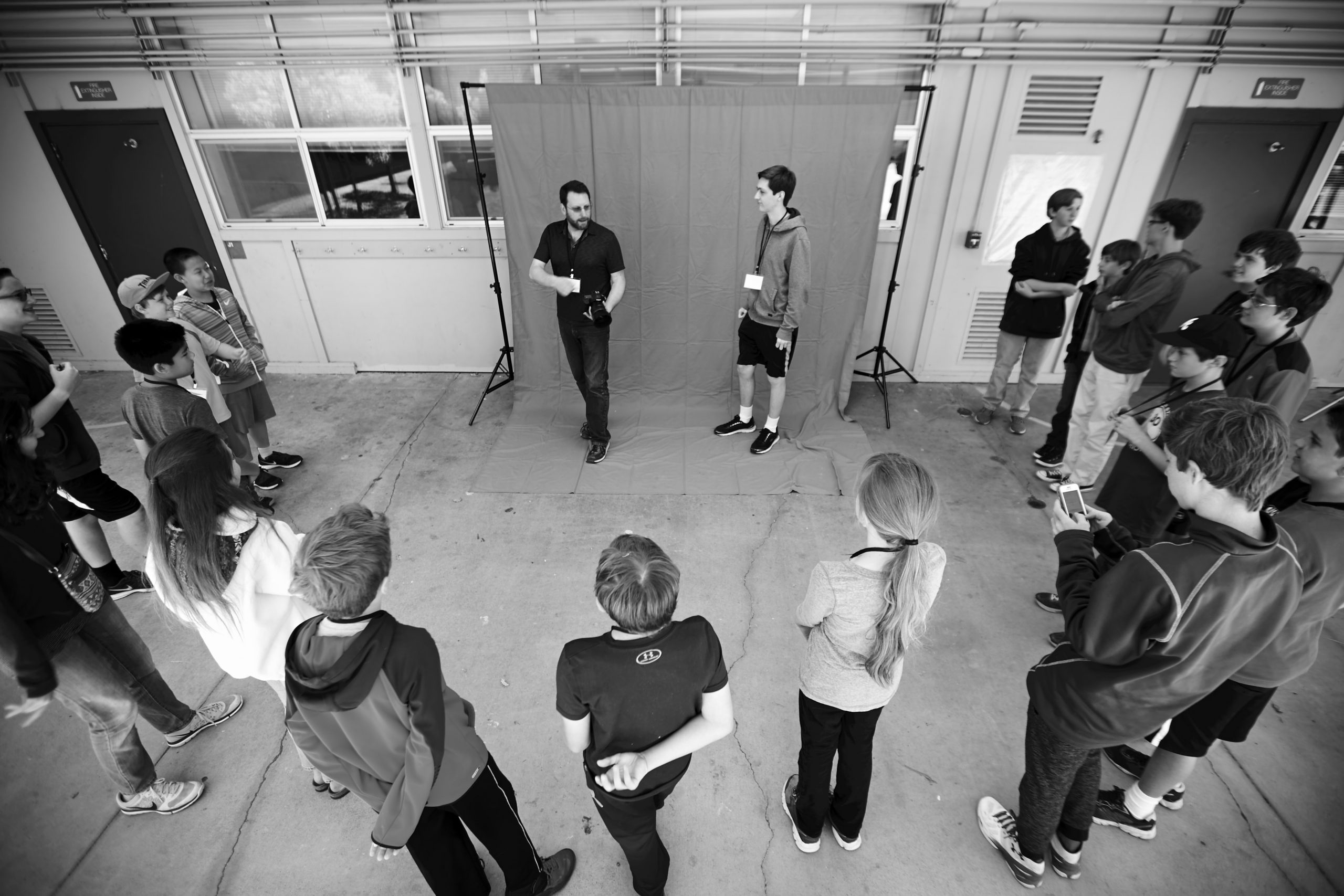Alumni Spotlight: From Blockbuster Movies to Enriching U, Howard Gersh Inspires Future Digital Artists

At a young age, Howard Gersh ’91 knew what he wanted to do when he grew up — work on visual effects for “Star Wars.” By the time the prequel trilogy started production in the late 1990s, he had received his B.S. in computer science from UCI and worked his way up to becoming a senior technical director at Industrial Light + Magic. His dream became a reality as he helped create visual effects for “Star Wars” Episodes I, II and III, as well as for dozens of other movies, from “Forrest Gump” to “Harry Potter” and “Pirates of the Caribbean.” Now, the recent ICS Hall of Fame inductee teaches virtual reality, animation and digital visual effects to high school students at Marin School of the Arts as well as to kids in underserved communities through Enriching U, an organization he and his wife founded to help such kids pursue their dreams as Gersh once pursued his.
What opportunities helped you realize your dreams?
Ever since the age of 10, when I saw the original “Star Wars” movie in theaters, I’ve known that’s I wanted to work on — more specifically, “Star Wars” visual effects. I began making short animated films, mostly stop-motion, using my dad’s 8mm film camera and continued that through high school. I was very fortunate to be able to take seven semesters of computer science in high school. In addition to building a HERO-1 robot and programming it in assembly language, I was also learning artificial intelligence and programming in languages like Lisp and Prolog. My computer science teacher, Ron Miller, recommended that I attend UCI because he had heard that it had an excellent program in computer science, especially artificial intelligence.
My UCI education was instrumental in guiding me in the right direction and confirming my interests in computer graphics, programming and art. If it weren’t for my time at UCI, I truly believe I wouldn’t be where I am today.
Did you have a favorite professor at UCI?
I have two favorite professors: Norm Jacobson and Tom Standish. Both of these professors tag-teamed the teaching of the Introduction to Computer Science courses and made them extremely fun, memorable and accessible. And while there may have been hundreds of students in the lecture hall, both Norm and Tom were extremely approachable and helpful outside of class.
Tell us about your path from UCI to Hollywood.
During my junior year at UCI, I applied for a summer internship at a visual effects studio in Simi Valley, Dream Quest Images. Knowing that I wanted to get into computer graphics after college, I took some computer graphics classes through the School of Engineering and, during my senior year at UCI, I purchased a book that listed all of the computer graphics companies doing commercials or films. I wrote to every single one of them seeking a job at their company after graduation.
Rhythm and Hues Studios in Hollywood offered me a job as a tape operator, backing up the artists’ data every night from 3 p.m. to 1 a.m. The job was pretty menial, and I was always more interested in being an artist, so I would stay late after work and learn the software that the artists were using at the time. Of all things to do, I chose to model, texture, light and render a still frame of the men’s room urinal! I put the finished frame on the television monitors in the machine room for the entire crew to see when they arrived in the morning.
My boss was convinced that there was a camera in the men’s room because the render was so photorealistic, but I assured him there wasn’t. When I told him that I created the image, he said to me, “You’re not a tape operator anymore; you’re now an artist.”
Can you talk a bit about your digital art, and how technology and art influence each other?
I have been drawing for a long as I can remember, and I began animating in middle school. In addition to taking computer science classes at UCI, I took a lot of studio art classes — drawing, sculpture and video art. Computer graphics is the perfect marriage of art and technology. When I work on my digital artwork, in either stills or an animated short, I always try to create a work such that a single frame of an animation can stand on its own; that each rendered frame is a work of art itself.
What’s the most memorable project you’ve worked on?
It’s hard to narrow it down to just one, so let me list a few. The first film I worked on at Industrial Light + Magic (ILM) was “Forrest Gump,” and everything about it was new to me. I had six months to put the different elements of practically photographed crowds all around the reflecting pool in Washington, D.C., between the Washington Monument and the Lincoln Memorial, and we were writing the software to stabilize all of the bobbles and shakes in the photography and match it to the principal photography with Tom Hanks in it.
I’d also have to say the “Star Wars” movies. They’re near and dear to my heart because by working on them, I had actually achieved my dream!
Finally, another stand-out project would have to be Disney’s “A Christmas Carol.” We were building a new studio, pipeline, software, crew and movie, and while any one of those things separately has its challenges, doing all of them at once was insane. But it was also a blast because we were all of the same mindset — we’re all in this together!
How did you get into teaching high school, and what do you like most about teaching?
I enjoy teaching others how to do something that I enjoy doing. In addition to teaching high school, I’ve also been teaching visual effects techniques at Academy of Art University since 2006. More than anything else, I love to inspire kids to do whatever they want. Luckily, I teach elective classes, and I love being able to teach high school kids about the exact same techniques and software that I used on major motion pictures.
It’s so rewarding to be able to see Isabella, a 14-year-old student of mine, create a photorealistic render of a bowl of fruit that she painted herself and rendered in Pixar’s RenderMan — the same software used to render “Incredibles 2” — only a few months after not even knowing how to create a folder. I’m blown away by how good my students’ work is! Across the board, my students are killing it!
What motivated you to start Enriching U?
Probably those seven semesters of computer science I had in high school and the lack of those opportunities in high schools today, unfortunately. We started Enriching U originally to teach visual effects to kids. In fact, we used to be called “VFX for Kids,” but once we began to teach video game design, robotics, coding, 3-D printing, virtual reality and photography, we changed our name.


I’ve actually been teaching kids visual effects ever since 1997, when we had an open house at ILM and I ran a program called “Star Wars for Kids,” when I went over all of the aspects of a computer graphics movie to the kids in attendance.
What was your reaction to learning you were being inducted into the ICS Hall of Fame?
I was both excited and very humbled to be included among the other inductees. It is quite an honor to be inducted into the ICS Hall of Fame, and I’m very grateful and appreciative for the recognition.
Any words of advice for ICS students?
Put your mind to it and work hard, and you too will achieve your dreams and goals. If you can dream it, you can do it.
— Shani Murray